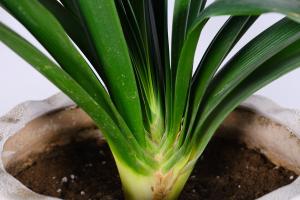Introduction
The dragon tree plant, also known as Dracaena, is an exotic and unique plant that can add a touch of natural beauty to any interior or exterior space. However, if it is not cared for properly, even the most resilient dragon tree plant can fall victim to environmental hazards and neglect. In this article, we will discuss the steps to revive a dragon tree plant that has lost its vigor and beauty.
Identify the Problems
The first step in reviving a dragon tree plant is to identify the problems that are causing it to wither. Different problems can lead to different symptoms such as yellowing or browning of the leaves, stunted growth, and wilting. Common problems that can cause a dragon tree plant to wither include overwatering, insufficient light, lack of nutrients, and pests.
Watering
Overwatering is a common problem that can lead to root rot and eventually kill your dragon tree plant. To prevent overwatering, make sure the soil is well-drained and only water the plant when the top inch of soil is dry to the touch. Reduce watering during the winter months when the plant goes into dormancy.
Light
Insufficient light can lead to stunted growth, yellowing of the leaves, and loss of foliage. Dragon tree plants require bright but indirect sunlight. If the plant is not receiving enough sunlight, move it to a brighter location, but avoid direct sunlight as it can scorch the leaves.
Nutrients
Lack of nutrients can also cause a dragon tree plant to wither. Fertilize the plant regularly with a well-balanced fertilizer during the growing season. Avoid fertilizing during the winter when the plant is dormant. Use a fertilizer that is specifically formulated for indoor plants.
Pests
Pests such as spider mites and mealybugs can also cause a dragon tree plant to weaken and eventually die. To get rid of these pests, wipe the leaves with a soft cloth dipped in soapy water. Alternatively, use insecticidal soap or horticultural oil to control the infestation.
Revitalizing the Plant
Once you have identified the problems and addressed them, it is time to revive the dragon tree plant. Trim off any dead or damaged leaves and prune the plant to encourage new growth. If the plant has grown too leggy, you can cut the stems back to a suitable height and propagate the cuttings into new plants.
Conclusion
Reviving a dragon tree plant requires patience, care, and attention. Identifying the problems, providing the right care, and revitalizing the plant can help bring back its beauty and vibrancy. With proper care, your dragon tree plant can thrive and add a touch of natural beauty to your home or office for years to come.

 how many times do yo...
how many times do yo... how many planted tre...
how many planted tre... how many pine trees ...
how many pine trees ... how many pecan trees...
how many pecan trees... how many plants comp...
how many plants comp... how many plants can ...
how many plants can ... how many plants and ...
how many plants and ... how many pepper plan...
how many pepper plan...





























